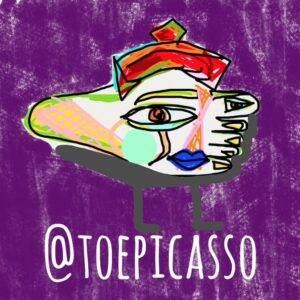If you’re living with orthopedic pain that makes everyday activities difficult, it’s natural to look for non-surgical solutions first. The idea of avoiding surgery appeals to almost everyone—especially when surgery sounds intimidating or disruptive. For bunions in particular, many patients turn to over-the-counter products like bunion pads, splints, or cushions hoping for relief. Unfortunately, while these products may provide temporary comfort, they rarely solve the problem long term. That’s because bunion correctors don’t address the actual cause of a bunion: a misalignment of the big toe joint. Without correcting that misalignment, pain and deformity almost always continue to progress.
How Do Bunion Cushions Work?
Bunion-correcting products are designed to reduce pressure and irritation, not to realign the bone or joint. Bunion pads and cushions come in two main forms. The first looks like a sock or sleeve that slips over the foot, creating a barrier around the bunion. The second is a small gel pad or adhesive cushion that sticks directly to the bump. Both types are meant to reduce friction between the bunion and your shoe, making it less painful to walk, stand, or wear footwear.
In theory, this sounds like a simple fix. In reality, results are often disappointing. Many patients find that the pads shift out of place, fail to cover the entire area, or don’t stay on during daily activity. Even when they work as intended, the relief is usually minimal and short-lived. Over time, bunions often become larger and more painful regardless of whether cushions are used. This leaves patients frustrated and searching for more effective solutions.
Treating Bunions
When left untreated, bunions will generally get worse over time. So, while a bunion might not seem like such a significant inconvenience right now, it could continue to grow and become more inflamed as time goes on, putting you at risk for additional medical complications in the future; some people experience hammertoes, leg, or back pain as a result of untreated bunions.
By changing your shoes, wearing bunion cushions, and/or using bunion splints or correctors, you may get some temporary relief, but if you don’t address the root problem and treat the bunion at its source, the pain will never truly go away.
As a side note, bunion splints may actually offer some post-operative benefits to patients after surgery. In this scenario, bunion splints can help break apart scar tissue and keep the foot aligned while tendons and ligaments heal, however, they are not an effective treatment for bunions on their own.
Traditional Bunion Surgery vs Minimally Invasive Surgery
If you’re looking for lasting relief from bunion pain, surgery is often the only solution. But not all bunion surgeries are the same. Traditional surgery and minimally invasive surgery differ greatly in how they’re performed, the recovery time, and the impact on your daily life.
Traditional Bunion Surgery
Traditional bunion surgery involves a long incision along the side of the foot. The surgeon cuts and repositions the bone, often securing it with screws, plates, or wires. Because of the extensive trauma, recovery is slow and uncomfortable. Patients typically need stitches, wear a bulky boot or cast, and rely on crutches for weeks. Swelling and stiffness can last for months, and many don’t feel fully recovered until six weeks to eight months after surgery.
Minimally Invasive Bunion Surgery
Minimally invasive surgery takes a completely different approach. Instead of a large incision, the surgeon makes a tiny opening—just enough to insert specialized instruments to realign the bone. At Northwest Surgery Center, this outpatient procedure is performed under local anesthesia in a modern, state-of-the-art suite. The entire process takes less than 90 minutes. Afterward, patients only need a small bandage and a lightweight post-op shoe for a few weeks. There are no stitches to remove, no bulky casts, and most patients are able to walk immediately, drive themselves home, and return to normal routines the very same day.
The difference is clear: while traditional bunion surgery can sideline patients for months, minimally invasive bunion surgery at Northwest Surgery Center provides the fastest, safest, and most effective path to lasting pain relief.
Treating Bunion Pain for Good
If you’ve been struggling with bunions, but have been hesitant to pursue surgery, now is the time to reconsider. While there are many products and tools on the market such as bunion pads, correctors, splints, and more, that aim to treat bunion pain at home, these are not effective long term solutions to bunion pain. If you want to get rid of pain once and for all and rediscover the ability to perform daily tasks such as walking, driving, exercising, and more without pain, it is time to undergo surgery. Thanks to the minimally invasive procedures offered from Northest Surgery Center, removing bunions and experiencing long term pain relief has never been easier.
Contact Us
At Northwest Surgery Center, we are proud to be pioneers in the field of minimally invasive bunion surgery. Our team of orthopedic experts has years of experience in correcting bunions. We have the skills, knowledge, and tools to ensure you’re able to get back on your feet –– without pain –– in no time after a bunion removal procedure. Don’t wait any longer! Correct your bunions today and find relief from pain. You can check out our gallery of before-and-after pictures here, or to schedule an appointment, contact us today.

Leave A Comment